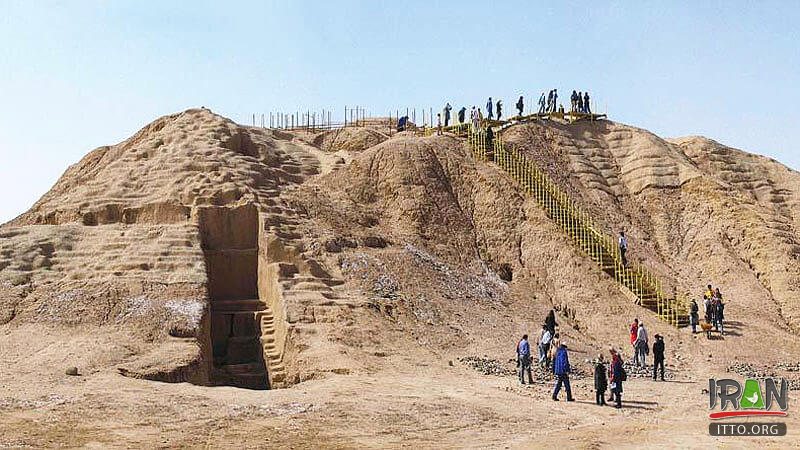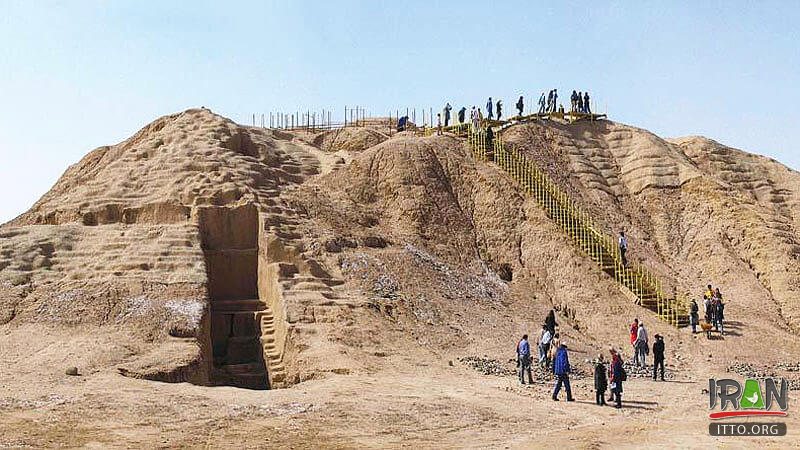Ancient Jiroft is a symbol of Iranian civilization. The history of the region dates back to more than 4,300 years ago. Today Jiroft is a city in Kerman Province.
Historical and archeological findings in the region provides evidence of the original great civilization. These works represent a part of the ancient Iranian culture and civilization, destinationiran.com wrote.
Jiroft historic site dates back to the third millennium BCE. The region once served as a bridge between Ilam Civilization, in the west, and the Sindh Valley Civilization in the east. An Iranian archeologist Yousef Majidzadeh first introduced Ancient Jiroft Civilization in 2003 with an emphasis on the artistic and architectural artifacts discovered in the region.
A Hungarian archeologist named Sir Aurel Stain was the first researcher to study the region in 1900. After him, other Iranian and foreign archeologists also explored this ancient site.
The past and current studies on Jiroft ancient civilization show the link between Kerman, Sistan-Baluchistan, Halil Rood and Tappeh Konar sandal.
Based on archeological findings, the oldest artifacts in Jiroft dates back to more than 7,000 years ago. Majidzadeh called Jiroft the cradle to civilization. The discovery of Ziggurat manuscripts in Jiroft supports Professor Majidzadeh’s claim.
The civilizations of Jiroft and Halil Rood regions, as two of the most important centers of the civilization of the East, have provided for several needs of the temples and palaces for thousands of years BCE. Archeologically, all the region is remarkably valuable, as some historians and researchers have named the region ‘The Lost Paradise’.
Seljuk Atabakan kings had chosen to stay in Jiroft as their winter capital. The favorable climate, the diversity of vegetation, the soil fertility and the presence of animal species in the region have been solid reasons for this choice of location. The discovery of manuscripts and Ziggurat, along with the cultural artifacts unearthed in Jiroft, ancient Iran, indicates that Jiroft ancient civilization dates back to at least the same period as Mesopotamian and Sumerian civilizations if not older.
Jiroft archeological findings show that more than half of the sites in this region are cemeteries. The ancient graves date back to around 5000 BCE. The objects unearthed from these cemeteries indicate that the ancient Iranian inhabitants of this region believed in life after death. For this very reasons, they buried the ancient objects with human corpses.
The discovery of a Ziggurat structure in the region has made Jiroft ancient civilization even more attractive to the antiquity enthusiasts. Ziggurat is a multi-story building or structure built of clay. Jiroft Ziggurat dates back to the first half of the third millennium BCE.
Archeologists have not yet discovered some of the main entrances to the Ziggurat, as the main part of the building has not been unearthed yet.
Another awesome discovery, a symbol of Jiroft ancient civilization, is a manuscript or inscription discovered approximately 30 kilometers away from Jiroft. This ancient script dates back to around 3000 BCE, which at least coincides with the invention of writing in Mesopotamia or earlier.
Jiroft ancient civilization, other findings and motifs :
Excavations and archeological studies in Jiroft historic mounds led to the discovery of many ancient vessels and objects, all of which represent the richness of culture and civilization in this region of ancient Iran.
A large part of the discoveries in this region is of decorative nature and bears floral motifs and embossed patterns. Some of these vessels are carved. Some of the artifacts also include the figurines of humans and animals made of stone, soap, bronze, wood, and so on. Also, some earthenware has been discovered in this region.
The animal motifs and patterns, hunting tools, decoration and carvings in Jiroft ancient artifacts indicate interaction between this civilization and that of the Sumerians as well as the Mesopotamians. Among the findings, one can see indications of doll making, stone carving, and sculpture.
Symbolic significance of Jiroft ancient civilization :
The beautiful and eye-catching treasures, along with ancient artifacts and objects unearthed in the historic site of Jiroft, symbolize the rich culture, civilization, and mythology of the people living at this region of ancient Iran.
Ancient Jiroft inhabitants had been convinced to think extensively and profoundly about life after death more than anyone else in their time.
Ziggurat, inscriptions, and objects made with beautiful and unique designs represent the powerful organization created and maintained by the kings of that period.
Because of Jiroft ancient civilization in ancient Iran, this region has been introduced to the world as one of the most valuable centers in which some of the lasting human civilizations has emerged. On the other hand, Jiroft has created a lot of buzz in the archeological world and reintroduced this part of Iran to the world.



